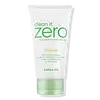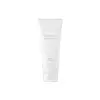What's inside
What's inside
 Key Ingredients
Key Ingredients

 Benefits
Benefits

 Concerns
Concerns

 Ingredients Side-by-side
Ingredients Side-by-side

Water
Skin ConditioningGlycerin
HumectantSodium Cocoyl Isethionate
CleansingGlyceryl Stearate
EmollientCetearyl Alcohol
EmollientCoconut Acid
CleansingPropanediol
SolventCocamidopropyl Betaine
CleansingStearic Acid
CleansingCI 77004
Cosmetic ColorantSodium Isethionate
CleansingHydroxypropyl Starch Phosphate
Sodium Methyl Cocoyl Taurate
CleansingPalmitic Acid
EmollientSalicylic Acid
MaskingMelaleuca Alternifolia Leaf Oil
AntioxidantSodium Chloride
MaskingSorbitol
HumectantCaprylyl Glycol
EmollientButylene Glycol
HumectantMagnesium Aluminum Silicate
Absorbent1,2-Hexanediol
Skin ConditioningEthylhexylglycerin
Skin ConditioningDisodium EDTA
Melia Azadirachta Leaf Extract
Skin ConditioningArachidic Acid
CleansingCapryloyl Salicylic Acid
ExfoliatingMica
Cosmetic ColorantMelia Azadirachta Flower Extract
Skin ConditioningMyristic Acid
CleansingOleic Acid
EmollientSodium Lactate
BufferingVolcanic Ash
AbrasiveCitric Acid
BufferingSodium PCA
HumectantMontmorillonite
AbsorbentMalic Acid
BufferingLactic Acid
BufferingGlycolic Acid
BufferingPyruvic Acid
MaskingMelaleuca Alternifolia Leaf Extract
PerfumingTartaric Acid
BufferingWater, Glycerin, Sodium Cocoyl Isethionate, Glyceryl Stearate, Cetearyl Alcohol, Coconut Acid, Propanediol, Cocamidopropyl Betaine, Stearic Acid, CI 77004, Sodium Isethionate, Hydroxypropyl Starch Phosphate, Sodium Methyl Cocoyl Taurate, Palmitic Acid, Salicylic Acid, Melaleuca Alternifolia Leaf Oil, Sodium Chloride, Sorbitol, Caprylyl Glycol, Butylene Glycol, Magnesium Aluminum Silicate, 1,2-Hexanediol, Ethylhexylglycerin, Disodium EDTA, Melia Azadirachta Leaf Extract, Arachidic Acid, Capryloyl Salicylic Acid, Mica, Melia Azadirachta Flower Extract, Myristic Acid, Oleic Acid, Sodium Lactate, Volcanic Ash, Citric Acid, Sodium PCA, Montmorillonite, Malic Acid, Lactic Acid, Glycolic Acid, Pyruvic Acid, Melaleuca Alternifolia Leaf Extract, Tartaric Acid
Water
Skin ConditioningSodium Cocoyl Isethionate
CleansingGlycerin
HumectantHydroxypropyl Starch Phosphate
Sodium Methyl Cocoyl Taurate
CleansingPropanediol
SolventPotassium Cocoyl Glycinate
Acrylates Copolymer
Cetearyl Alcohol
EmollientPotassium Cocoate
EmulsifyingSorbitan Olivate
EmulsifyingSalicylic Acid
MaskingGlycol Distearate
EmollientGlyceryl Stearate
EmollientCitric Acid
BufferingCaprylyl Glycol
EmollientButylene Glycol
Humectant1,2-Hexanediol
Skin ConditioningGlyceryl Caprylate
EmollientCentella Asiatica Extract
CleansingDisodium EDTA
Water, Sodium Cocoyl Isethionate, Glycerin, Hydroxypropyl Starch Phosphate, Sodium Methyl Cocoyl Taurate, Propanediol, Potassium Cocoyl Glycinate, Acrylates Copolymer, Cetearyl Alcohol, Potassium Cocoate, Sorbitan Olivate, Salicylic Acid, Glycol Distearate, Glyceryl Stearate, Citric Acid, Caprylyl Glycol, Butylene Glycol, 1,2-Hexanediol, Glyceryl Caprylate, Centella Asiatica Extract, Disodium EDTA
 Reviews
Reviews

Ingredients Explained
These ingredients are found in both products.
Ingredients higher up in an ingredient list are typically present in a larger amount.
1,2-Hexanediol is a synthetic liquid and another multi-functional powerhouse.
It is a:
- Humectant, drawing moisture into the skin
- Emollient, helping to soften skin
- Solvent, dispersing and stabilizing formulas
- Preservative booster, enhancing the antimicrobial activity of other preservatives
Butylene Glycol (or BG) is used within cosmetic products for a few different reasons:
Overall, Butylene Glycol is a safe and well-rounded ingredient that works well with other ingredients.
Though this ingredient works well with most skin types, some people with sensitive skin may experience a reaction such as allergic rashes, closed comedones, or itchiness.
Learn more about Butylene GlycolCaprylyl Glycol is a humectant and emollient, meaning it attracts and preserves moisture.
It is a common ingredient in many products, especially those designed to hydrate skin. The primary benefits are retaining moisture, skin softening, and promoting a healthy skin barrier.
Though Caprylyl Glycol is an alcohol derived from fatty acids, it is not the kind that can dry out skin.
This ingredient is also used as a preservative to extend the life of products. It has slight antimicrobial properties.
Learn more about Caprylyl GlycolCetearyl alcohol is a mixture of two fatty alcohols: cetyl alcohol and stearyl alcohol. It is mainly used as an emulsifier. Emulsifiers help prevent the separation of oils and products. Due to its composition, it can also be used to thicken a product or help create foam.
Cetearyl alcohol is an emollient. Emollients help soothe and hydrate the skin by trapping moisture.
Studies show Cetearyl alcohol is non-toxic and non-irritating. The FDA allows products labeled "alcohol-free" to have fatty alcohols.
This ingredient is usually derived from plant oils such as palm, vegetable, or coconut oils. There is debate on whether this ingredient will cause acne.
Due to the fatty acid base, this ingredient may not be Malassezia folliculitis safe.
Learn more about Cetearyl AlcoholCitric Acid is an alpha hydroxy acid (AHA) naturally found in citrus fruits like oranges, lemons, and limes.
Like other AHAs, citric acid can exfoliate skin by breaking down the bonds that hold dead skin cells together. This helps reveal smoother and brighter skin underneath.
However, this exfoliating effect only happens at high concentrations (20%) which can be hard to find in cosmetic products.
Due to this, citric acid is usually included in small amounts as a pH adjuster. This helps keep products slightly more acidic and compatible with skin's natural pH.
In skincare formulas, citric acid can:
While it can provide some skin benefits, research shows lactic acid and glycolic acid are generally more effective and less irritating exfoliants.
Most citric acid used in skincare today is made by fermenting sugars (usually from molasses). This synthetic version is identical to the natural citrus form but easier to stabilize and use in formulations.
Read more about some other popular AHA's here:
Learn more about Citric AcidDisodium EDTA plays a role in making products more stable by aiding other preservatives.
It is a chelating agent, meaning it neutralizes metal ions that may be found in a product.
Disodium EDTA is a salt of edetic acid and is found to be safe in cosmetic ingredients.
Learn more about Disodium EDTAGlycerin is already naturally found in your skin. It helps moisturize and protect your skin.
A study from 2016 found glycerin to be more effective as a humectant than AHAs and hyaluronic acid.
As a humectant, it helps the skin stay hydrated by pulling moisture to your skin. The low molecular weight of glycerin allows it to pull moisture into the deeper layers of your skin.
Hydrated skin improves your skin barrier; Your skin barrier helps protect against irritants and bacteria.
Glycerin has also been found to have antimicrobial and antiviral properties. Due to these properties, glycerin is often used in wound and burn treatments.
In cosmetics, glycerin is usually derived from plants such as soybean or palm. However, it can also be sourced from animals, such as tallow or animal fat.
This ingredient is organic, colorless, odorless, and non-toxic.
Glycerin is the name for this ingredient in American English. British English uses Glycerol/Glycerine.
Learn more about GlycerinGlyceryl Stearate is a mix of glycerin and stearic acid.
It is used to stabilize the mixing of water and oil ingredients. By preventing these ingredients from separating, it can help elongate shelf life. It can also help thicken the product's texture.
As an emollient, it helps soften skin and supports barrier-replenishing ingredients.
In cosmetics, Glyceryl Stearate is often made from vegetable oils or synthetically produced.
This ingredient may not be fungal-acne safe
Fun fact: The human body also creates Glyceryl Stearate naturally.
Learn more about Glyceryl StearateHydroxypropyl Starch Phosphate is a modified starch used to help thicken a product.
It is also used in foods.
Propanediol is an all-star ingredient. It softens, hydrates, and smooths the skin.
It’s often used to:
Propanediol is not likely to cause sensitivity and considered safe to use. It is derived from corn or petroleum with a clear color and no scent.
Learn more about PropanediolSalicylic Acid (also known as beta hydroxy acid or BHA) is a well-known ingredient for treating skin that struggles with acne and clogged pores. It exfoliates both the skin's surface and deep within the pores to help clear out buildup, control oil, and reduce inflammation.
Unlike AHAs (alpha hydroxy acids), salicylic acid is oil-soluble. This allows it to penetrate into pores which makes it especially effective for treating blackheads and preventing future breakouts.
Salicylic acid is also known for its soothing properties. It has a similar structure to aspirin and can calm inflamed or irritated skin, making it a good option for acne-prone skin that is also sensitive.
Concentrations of 0.5-2% are recognized by the U.S. FDA as an over-the-counter topical acne product.
It can cause irritation and/or dryness if one's skin already has a compromised moisture barrier, so it's best to focus on repairing that before introducing this ingredient into your routine.
While salicylic acid does not increase sun sensitivity, it’s still important to wear sunscreen daily to protect your skin.
If you are looking for the ingredient called BHA or Butylated Hydroxyanisole, click here.
Learn more about Salicylic AcidSodium cocoyl isethionate is a natural ingredient from coconut oil. It is an ultra gentle cleanser that gives a nice foam without drying the skin or impacting the skin barrier.
The amount of foam created depends on the amount of sodium cocoyl isethionate used in the product.
This ingredient also helps improve the spreadability of a product.
Learn more about Sodium Cocoyl IsethionateThis gentle cleansing and foaming ingredient is known for leaving a smooth feeling in skin and hair. It is made using coconut oil.
According to the manufacturer, it is soluble in water and has resistance to hard water, acid, and alkali.
Due to its coconut base, it may not be Malassezia folliculitis safe.
Learn more about Sodium Methyl Cocoyl TaurateWater. It's the most common cosmetic ingredient of all. You'll usually see it at the top of ingredient lists, meaning that it makes up the largest part of the product.
So why is it so popular? Water most often acts as a solvent - this means that it helps dissolve other ingredients into the formulation.
You'll also recognize water as that liquid we all need to stay alive. If you see this, drink a glass of water. Stay hydrated!
Learn more about Water